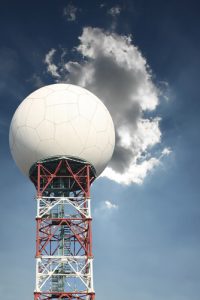
The first major weather legislation to be adopted since the early 1990s was signed into law this week after being shepherded through Congress by U.S. Reps. Lamar Smith (R-TX), Frank Lucas (R-OK) and U.S. Sen. John Thune (R-SD).
The Weather Research and Forecasting Innovation Act outlines reforms to federal weather forecasting, steps to improve seasonal forecasting, enhanced monitoring and relaying of information about severe weather, and use of aircraft systems to better track the paths of hurricanes.
“President Trump’s signature on the Weather Research and Forecasting Innovation Act marks a major advance toward transforming our nation’s public-private weather enterprise,” Smith, the chairman of the House Science, Space and Technology Committee, said. “This crucial legislation will facilitate new weather research, models and technologies to greatly increase public safety in the United States.”
The measure directs the National Oceanographic and Atmospheric Administration (NOAA) and the National Weather Service (NWS) to establish usable, accurate and timely subseasonal and seasonal forecasts using $26.5 million in funds appropriated to NWS through fiscal year 2018. By providing NOAA with new authority, the bill allows the agency the flexibility to buy new, affordable and potentially better sources of data.
“With more and better options, including commercial, we can now make the improvements we need to our weather forecasting capabilities,” Smith said.
The measure also establishes a tornado warning improvement and extension program that will rely on cooperation from private-sector and academic partners to develop and extend accurate tornado forecasts and warnings beyond one hour.
“The president signing the Weather Research and Forecasting Innovation Act marks a significant shift toward the improvement of our country’s ability to forecast major storms and tornadoes,” Lucas, the vice chairman of the House Science, Space and Technology Committee, said.
“By encouraging new technologies both outside and inside of NOAA, we can put our country back on track to be a world leader in weather forecasting,” Lucas said.
The measure also authorizes NOAA to place tsunami sensors on commercial and federal telecommunications cables and authorizes grant funding for the study of “paleotsunamis,” evidence of devastating prehistoric waves.
Thune, the chairman of the Senate Committee on Commerce, Science and Transportation, sponsored the Senate version of the bill. “These sweeping reforms will make needed changes in weather forecasting to reflect and build upon advancements in satellite technology, how we use the internet to communicate, and scientific advancements that can help better predict coming changes in heat and moisture from season to season.”
Enactment of the legislation, Thune said, will lead to better warning of extreme weather events and long-term forecasting changes that give farmers better information about what and when to plant, and will help local transportation departments prepare for harsh winters.



